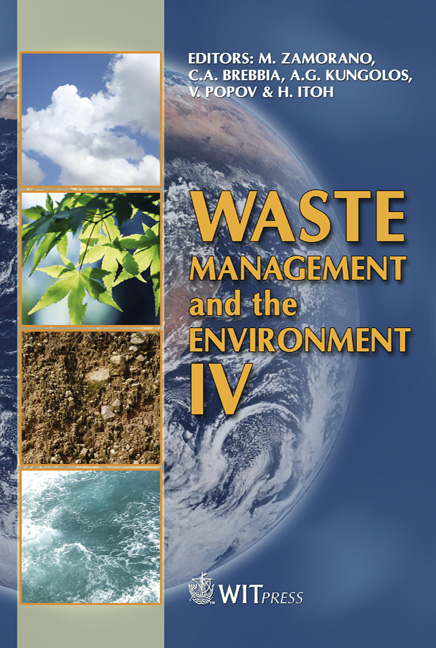Waste Management In The City Of Shah Alam, Malaysia
Price
Free (open access)
Transaction
Volume
109
Pages
7
Page Range
605 - 611
Published
2008
Size
274 kb
Paper DOI
10.2495/WM080621
Copyright
WIT Press
Author(s)
D. B. Omar
Abstract
Malaysia has been undergoing rather rapid urbanisation since the beginning of the 20th century. The level of urbanisation increased from 55.1 per cent in 1995 to 61.8 per cent in 2000, 63 per cent in 2005 and is expected to increase to 63.8 by 2010. The total population of Malaysia was 26.75 million in 2005 and is expected to increase to 28.96 million by 2010. This increase leads to more solid waste. The Klang Valley is the most urbanised region with 45 per cent of Malaysian urban centres being located here. The city of Shah Alam is one of the major centres in the Klang Valley and is a developing new town. Solid waste management is a major problem in the city of Shah Alam and new strategies are needed which aim at involving all citizens and achieving a sustainable environment. The City Council of Shah Alam requires waste compositional information at the local level to plan, implement and monitor waste management schemes that will enable them to meet their contribution to the national targets. This paper will discuss the current situation in the city of Shah Alam and the National Strategic Plan for Solid Waste Management. Keywords: urbanisation, population, solid waste management, citizens, sustainable environment. 1 Introduction Malaysia is now at the mid-point of its journey towards becoming a developed country by 2020. It has been undergoing rather rapid urbanisation since the beginning of the 20th century. The level of urbanisation increased from 55.1 per cent in 1995 to 63 per cent in 2005 and is expected to increase to 63.8 by 2010.
Keywords
urbanisation, population, solid waste management, citizens, sustainable environment.





